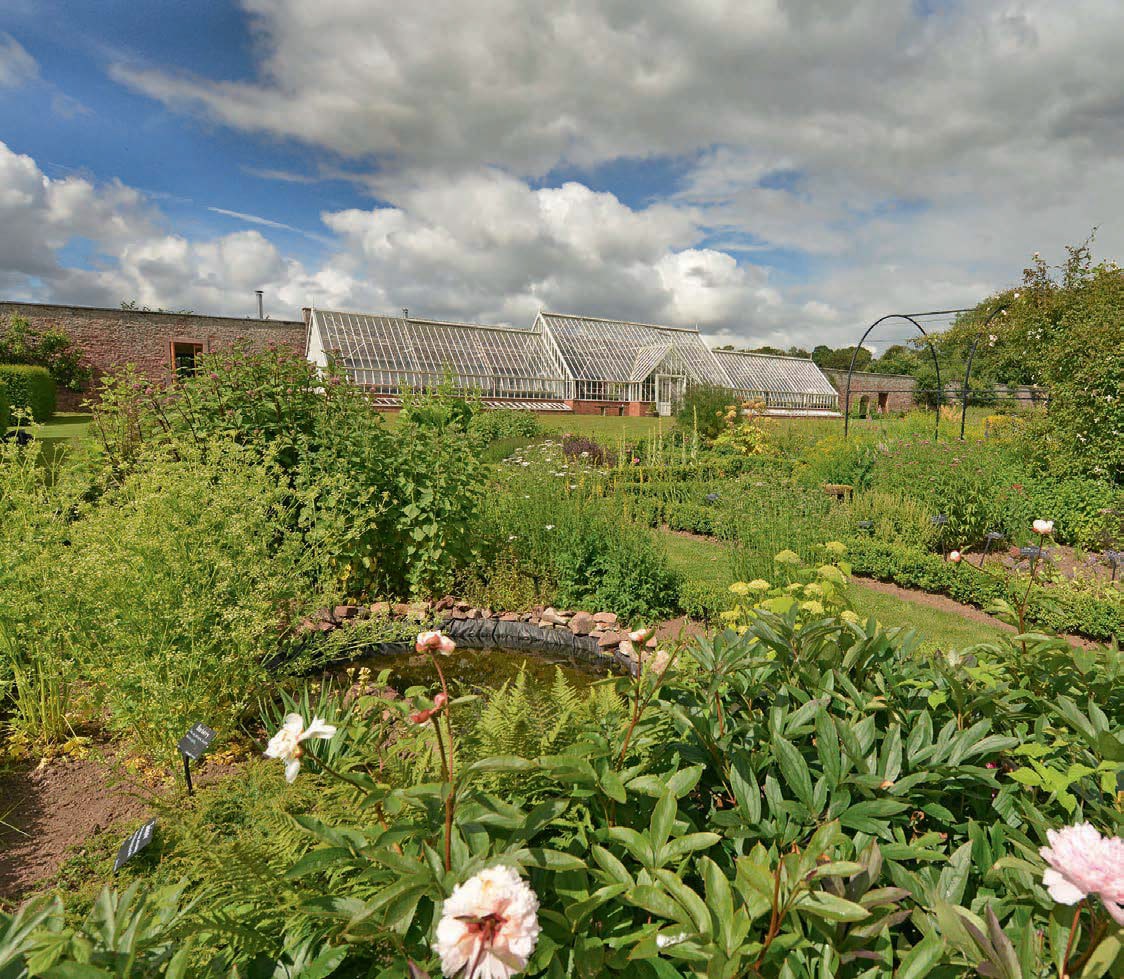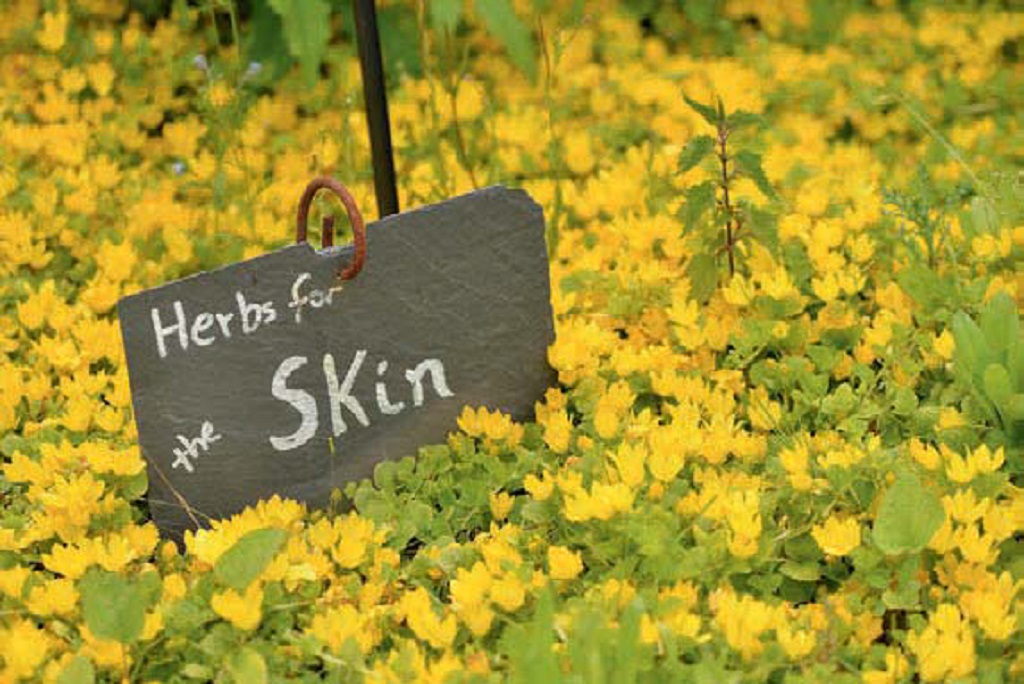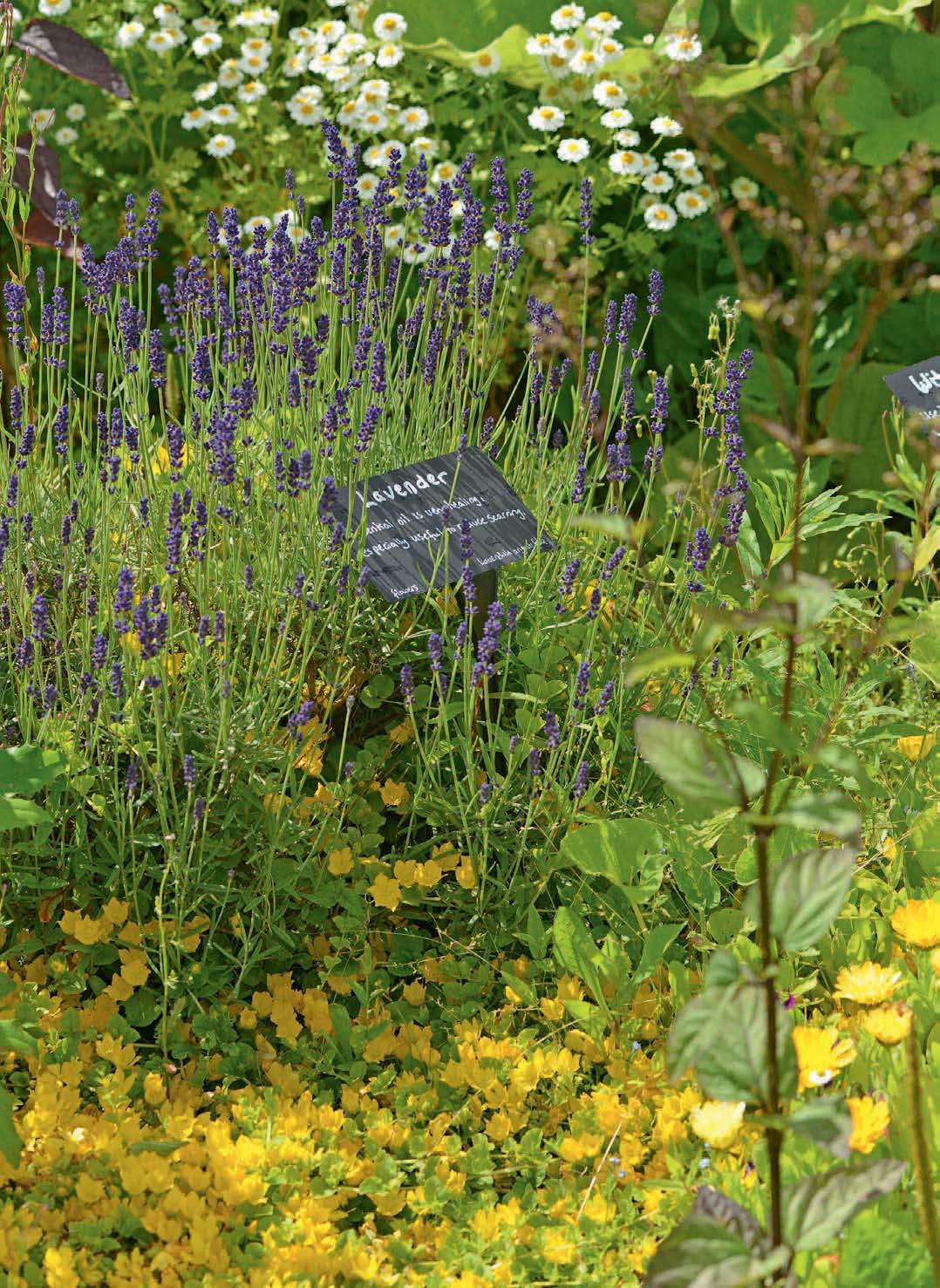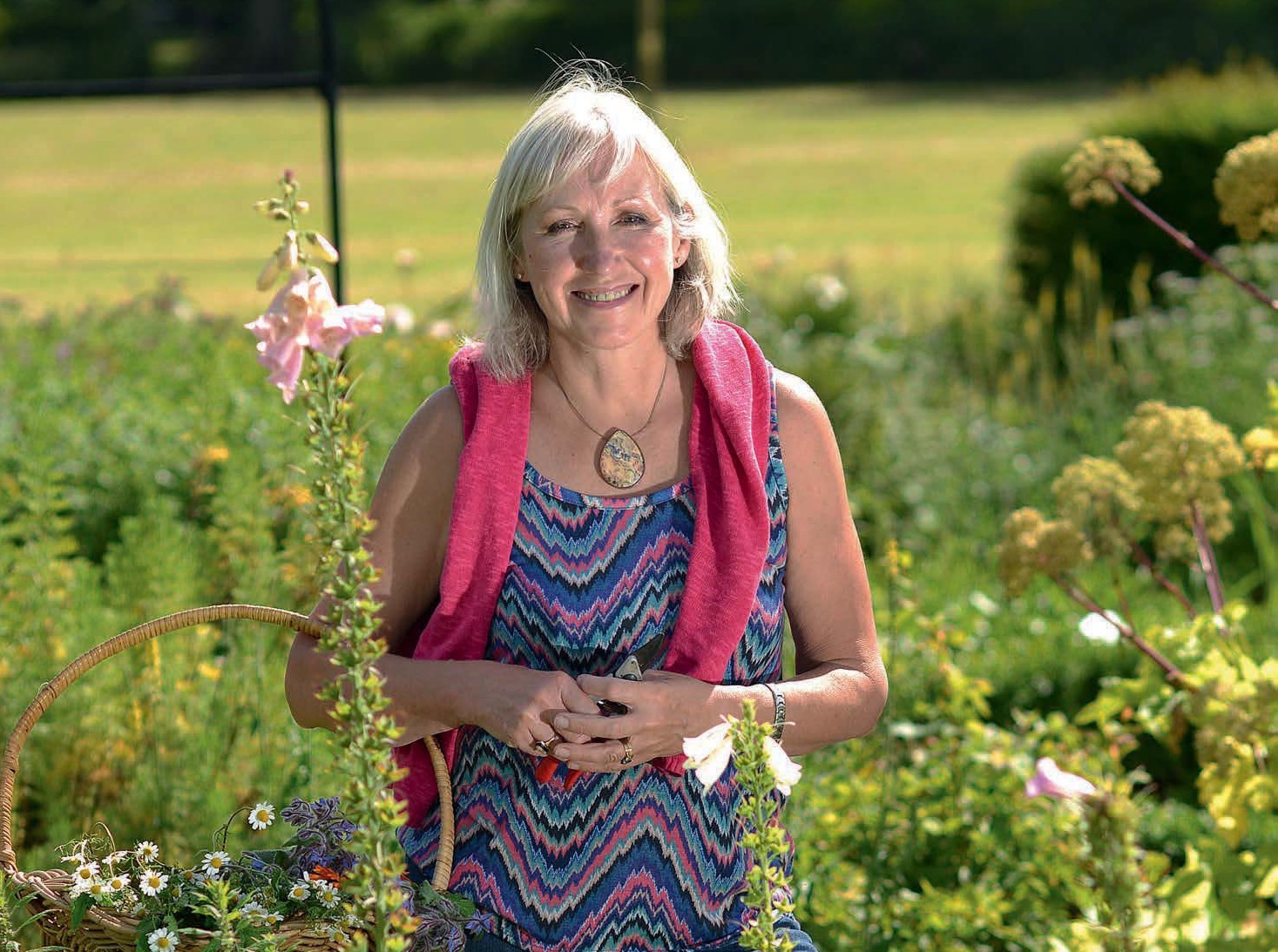
Herbal garden brings a sense of well-being
Have some happy tea,’ says Terrill Dobson. ‘Every visitor to my garden must have some.’
Leading the way into her consulting room she hands me what she later reveals as a blend of chamomile, lime flower, rose and lavender. Subtle, fragrant and delicious, this aptly-named brew encapsulates the ethos of Logie, her Angus herb garden.
The sense of well-being is enhanced by your first sight of the 18th century walled garden glimpsed through the consulting room door and reached down a flight of steps. Below a classical knot garden is laid out with eight generous, box edged rectangles divided by grass paths. Each space is devoted to a particular body system and planted with a relevant selection of the 150 medicinal herbs.
Two questions spring to mind. How did American-born Terrill find her way to the depths of rural Angus? And, when herb gardens are typically green, why is this one so colourful?

The greenhouses in the walled garden. (Photo: Angus Blackburn)
‘I met Gavin when he was working in Chicago,’ explains Terrill. ‘We married and moved to Scotland.’ The couple, who have three children, bought Logie, near Kirriemuir, to farm organically. ‘While Gavin focused on the farm, I began with the walled garden and its existing, newly built, glasshouse.’
A former university lecturer in computing, Terrill had an ongoing interest in natural health but then ‘had a bit of a mid-life crisis and decided to make some changes.’ She enrolled on a four year BSc (Hons) course in Herbal Medicine with a mind to growing medicinal herbs at Logie. ‘The course included botany, medicine, pharmacology and of course herbs and how to use them safely.’
Graduating in 2009 she established this demonstration garden and her herbal practice around it. Herbs, and even her fruits and vegetables, are clearly labeled with actions to help visitors learn about their health benefits and traditional use.

The plants are divided into different categories (Photo: Angus Blackburn)
‘Herbalists believe it is essential to treat the whole person,’ she explains, leading the way between the beds. ‘This involves a blend of usually 5-7 herbs tailored to each individual’s need.’
Pausing at the space aimed at digestion, she points out aromatic and digestive peppermint and fennel alongside liver stimulants wormwood and barberry. The bed for calming nervines include lemon balm, red valerian and blue flowering borage and The Wizard’s Herb, vervain.
The rectangle devoted to herbs for women includes exotic-sounding black cohosh, purple sage, and dong quai (which is helpful in menopause), along with mugwort, chartreuse lady’smantle and spring-flowering pulsatilla, which is said to relieve menstrual problems.
Herbs suited to urinary complaints surround a small kidney-shaped pond and include diuretic parsley and dandelion, plus antiseptics targeted to kidney and bladder such as juniper, bearberry, the pink heather flower.

Lavender adds height to the flower beds (Photo: Angus Blackburn)
Respiratory herbs such as sweet violet, leafy horehound and deep blue hyssop are raised besides mullein and elecampane, used as lung tonics. Purple-flowering thyme and pale pink marshmallow are displayed for their antiseptic properties.
The heart and circulatory bed is designed around a pair of heart-shaped slate outlines. ‘Herbs can be used in various ways to support heart health,’ Terrill explains. ‘Yarrow and catmint calm blood pressure, rosemary helps circulation, and foxglove is known by many as the heart medicine digitalis.’ Borage has traditionally been used for courage and rose in times of grief.
Herbs supporting and stimulating the immune system include golden marigolds, garlic, elder, and purple echinacea. The final bed includes herbs for both the skin and the musculo-skeletal system, divided by an orange calendula-lined row of slates.

Terrill Dobson picks plants for her ‘happy tea’. (Photo: Angus Blackburn)
Plants such as thistly, burdock and deep pink figwort, she continues, are effective blood cleansers used to remedy skin problems, while calendula and lavender are excellent external healing agents. Wild celery is an excellent anti-rheumatic as is the common weed feverfew. Nettles have long been used by the Scots to relieve rheumatic pain both internally and externally.
Explaining the reason for the colorful display she says: ‘Because these herbs are for teaching I allow them to flower and seed. In my kitchen garden I have several beds devoted to harvesting for tinctures and teas and these herbs are picked just as they come into flower.’
Figs and peaches grow in the 30ft glasshouse, which also includes frost tender medicinal plants such as ginger and liquorice. To the left a sunken aquifer is home to a family of frogs and herbs that like their feet wet, such as fragrant cardamom, bitter bogbean and creamy meadowsweet. A cluster of lilac coloured oriental, opium poppies add a reminder that herbs are often grown by gardeners unaware of their properties.
Terrill, who researched Scotland’s rich tradition of herbal medicine for her dissertation and recently helped establish a Physic Garden within Ninewells Hospital garden in Dundee, is a mine of fascinating detail. Her passion is clearly to help others learn more about the ancient art of herbal medicine.
For further details visit www.angusherbalists.co.uk
(This feature was originally published in 2015)
TAGS

